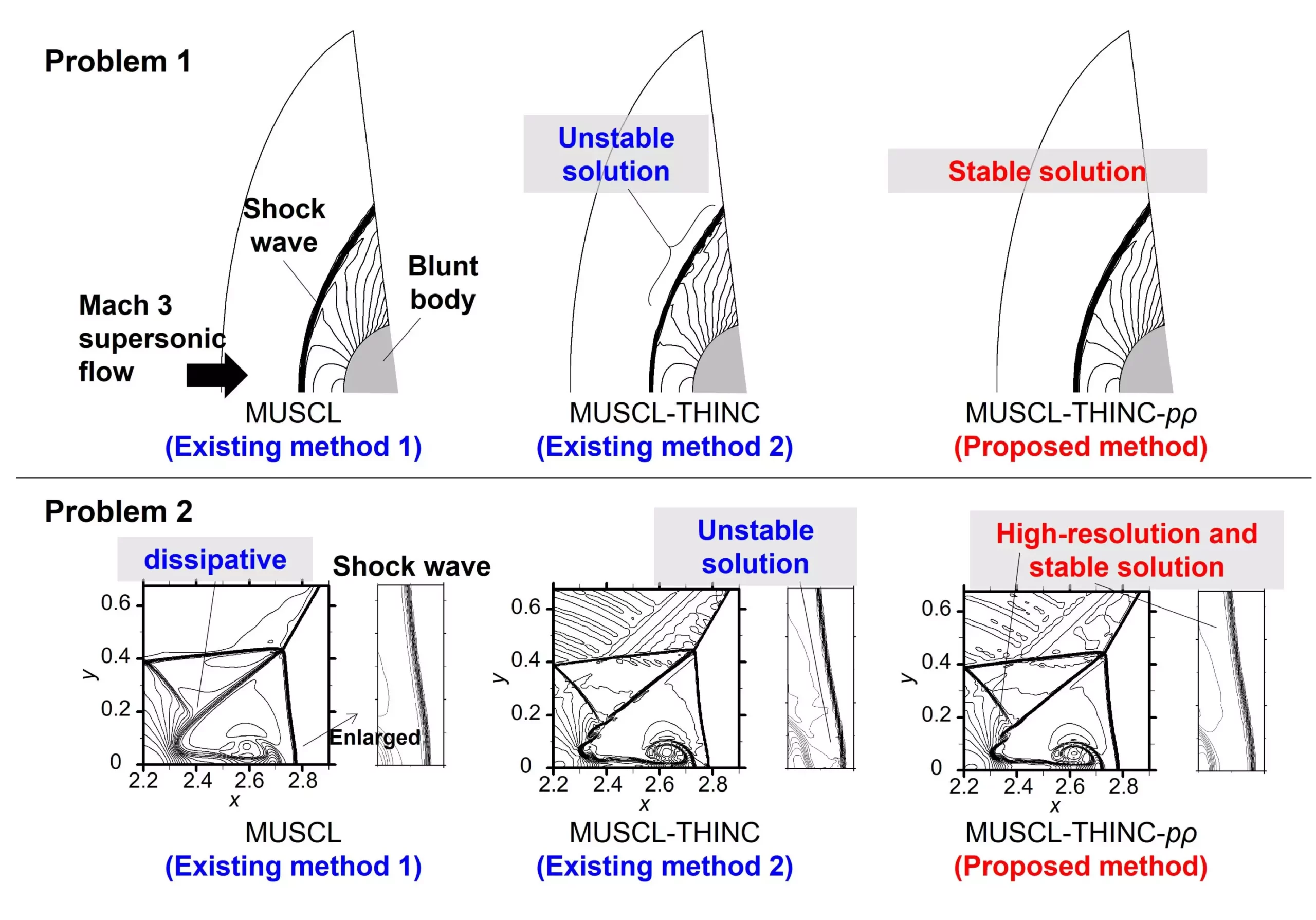In the complex realm of fluid dynamics, accurately simulating compressible flows remains a daunting challenge for scientists and engineers alike. A recently published study in the *Physics of Fluids* journal presents a significant breakthrough— a hybrid scheme dubbed T-MUSCL— designed to enhance the simulation of both steady and unsteady single-phase compressible flows. Spearheaded by a team from Yokohama National University, this innovative approach has the potential to bridge the gap between advanced theoretical methods and practical engineering applications, paving the way for improved accuracy in computational simulations.
The Power of Hybridization: Introducing T-MUSCL
The T-MUSCL hybrid scheme unites the strengths of the traditional monotonic upstream-centered schemes for conservation laws (MUSCL) with the tangential hyperbolic interface capturing (THINC) method—an ingenious amalgamation that enhances the computational landscape for engineers dealing with fluid dynamics. The MUSCL method has long been lauded for its straightforward mathematical framework, particularly in applications involving shock waves, but it often struggles with excessive numerical dissipation that hampers accuracy in complex scenarios. The newly devised T-MUSCL method strategically addresses this limitation by optimizing flow simulations according to varying degrees of nonlinearity and discontinuity.
Keiichi Kitamura, an associate professor at Yokohama National University, emphasizes the necessity for accessible solutions that tackle the prevalent disconnect between sophisticated academic models and the practical needs of engineering. With T-MUSCL, the research team has formulated a solution that not only minimizes errors but also retains user-friendly functionality, helping engineers overcome traditional obstacles in compressible flow simulations.
Technical Innovations: Parameters That Make a Difference
At the core of the T-MUSCL scheme lie two essential parameters: the nonlinearity-weighted parameter and the slope-ratio-weighted parameter. These critical metrics empower the T-MUSCL method to adeptly capture various shock wave phenomena—both weak and strong—creating a simulation that showcases enhanced precision compared to conventional methods. This advancement translates to tangible benefits across a range of engineering applications, particularly within the aerospace sector, where understanding shock dynamics is critical for design and performance.
The impact of these innovations cannot be overstated. By accurately resolving weak shock waves that were traditionally problematic, T-MUSCL stands to revolutionize existing paradigms in fluid dynamics. The study revealed that its approach resulted in minimal errors, improved convergence, and a more stable numerical behavior, even accounting for the complexities typically associated with compressible flows. This fortification against instability is an essential advancement for engineers who strive for higher fidelity in their simulations.
Future Prospects: Bridging Theory with Real-World Applications
So what lies ahead for the T-MUSCL method? The research team’s next steps involve applying their groundbreaking scheme to real-world engineering problems, a move that will intensify its relevance in practical contexts. Gaku Fukushima, another researcher from the same faculty, envisions a widespread adoption of this method across industries, particularly in aerospace and mechanical engineering sectors. The ambition to deepen understanding of compressible flow dynamics through T-MUSCL is not merely theoretical; it strongly aligns with the urgent needs of industries that rely on precise fluid flow analysis for technological advancement.
By focusing not just on academic interest but also on addressing real challenges faced by engineers, the T-MUSCL hybrid scheme epitomizes a necessary evolution in computational fluid dynamics. This union of approachability and high-resolution precision manifests a dual benefit; it allows researchers a reliable tool for investigation while simultaneously addressing practical concerns that dictate engineering successes.
The Challenge of Complexity in Engineering
The complexities of fluid dynamics are magnified when dealing with compressible flows, especially under conditions that necessitate precision, such as those encountered in aerodynamics. The T-MUSCL scheme’s commitment to simplicity of expression ensures that it is not just another academically intriguing concept, but rather a viable solution meaningful to the engineering community. The essence of this innovation lies in its capacity to deliver high-resolution results without overcomplicating existing algorithms—a feature that can have profound implications for future industrial applications.
Enhanced simulation fidelity secure crucial advancements in fields reliant on fluid dynamics, yet with the understanding that simpler, more efficient methodologies can often yield powerful results if approached innovatively. T-MUSCL’s implications extend far beyond its initial usage; the method opens doors to a future where computational fluid dynamics is not just more comprehensible, but also more effective in driving progress across various engineering disciplines.

